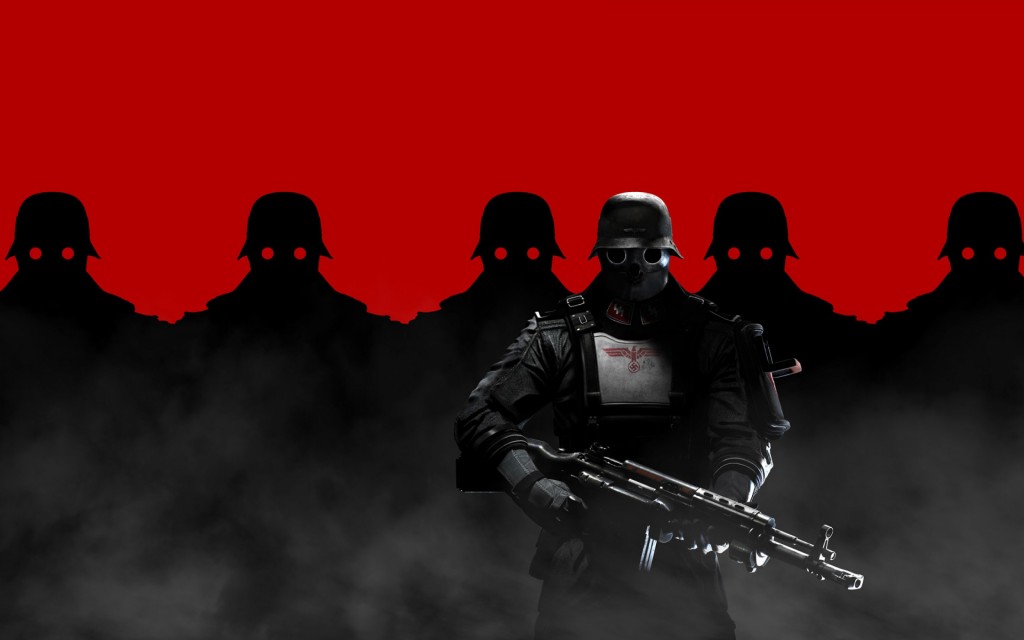By Michael WORKMAN
Does the world need another game about fighting Nazis? The answer is a resounding maybe. Gamers have been fighting virtual national socialists pretty much since the beginning of first-person shooters. But this isn’t just any old game where you fight Nazis; this is the “Wolfenstein” series. A name that any old school PC gamer would recognize that conjures images of some of the first 3D graphics used in a video game. Also, it conjures images of “Mecha Hitler,” the over-the-top finale boss of “Wolfenstein 3D” where the leader of the Third Reich is sporting dual chain guns and encased in robot suit armor. The “Wolfenstein” series definitely has a rich history of success, but does this mean its latest title will bring some much needed life to a genre that may be becoming somewhat stale?
“Wolfenstein: The New Order” begins in an alternate history. The year is 1946, and Germany has gained the upper hand against the allies and the Nazi war machine is now producing terrifying advanced technology that seems unstoppable. You assume the role of Captain B.J. Blazkowicz, a special forces operative sent on a last ditch mission to destroy a Nazi research facility in order to stop the Germans from producing any more advanced weapons. The mission goes horribly wrong and the player is wounded and ends up in a Polish asylum in a completely catatonic state. Fourteen years pass before B.J. finally snaps out of his stupor, only to find that the Nazis now rule the world.
Returning fans of the series will notice some big gameplay changes since the last “Wolfenstein” game. Players can dual-wield various guns, from pistols to assault rifles (which is utterly insane to attempt in real life, but this is a video game after all). There don’t seem to be any drawbacks to using two assault rifles in the game other than a slightly longer reload time. Accuracy strangely shows no sign of suffering even when using both guns. Another new addition to the series is a cover system for firefights.
It’s unusual to feature cover systems in first-person shooter, as it is much more of a stable for third-person, but we are seeing it more and more for games with a first-person view. Basically, you press B.J. against a wall and press the cover command and the camera leans out diagonally allowing the player to shoot at enemies, while taking considerably less damage than if caught out in the open. Ubisoft’s “Far Cry 3” had a similar cover system, but executed much more effectively allowing the player to smoothly peek out from corners. “Wolfinstein: The New Order” features a strange mechanic that allows B.J. to lie prone in order to fire at enemies’ feet if an opening low to the ground permits. It comes off as just awkward and doesn’t come up enough to really justify its existence in the game.
The game’s artificial intelligence – AI – doesn’t strike me as incredibly smart, as it was advertised, but it isn’t glaringly stupid either. Enemies take cover if there is any available and will try to make their way to attack your exposed flank in larger areas that allow more movement. But any experienced player still has a huge advantage over the AI. Players can easily exploit the predictable movements of most enemies and get through the game with little difficulty. Only later in the story do you encounter armored battle robots that require more strategy to take out and could cause some problems. While playing the game I noticed something that precious few games ever try to show: They didn’t entirely dehumanize the enemies.
World War II is famous for its war propaganda, and nearly every country involved tried to portray its enemies as monsters or even vermin. The Nazis are notorious for this, but the Allies engaged in some rather shameful propaganda as well. “Wofinstein: The New Order” ironically lets players read a letter that a German soldier wrote that captures the reality that these enemies being killed are people, too. The soldier writes how he used to attend university and that he wished to profess his love to a girl back at his hometown. He also tells a ghastly story of his comrades being massacred by tribal natives in Africa. This letter could be easily overlooked by players who don’t have time to read stuff and want to keep shooting but it offers a glimpse of humanity rare in a game of this type.
The big question for this game is this: Is “Wolfenstein: The New Order” just another Nazi shooter game? The answer is mixed. It offers a fresh twist on the story line and has very unique out-of-this-world enemies who don’t appear in many World War II type games. However, it doesn’t seem to innovate enough with gameplay and AI to really make it stand out.
“Wolfenstein: The New Order,” reviewed for the PC, gets a 3 out of 5.

